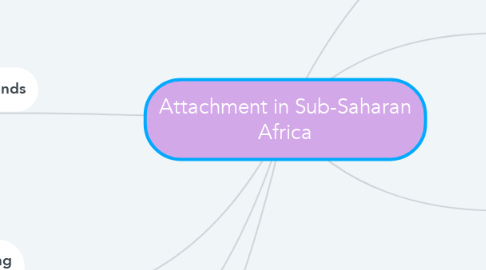
1. Scope and Trends
1.1. Huge variety of child rearing practices across Africa, therefore some places will have different SST results than others
1.2. Researchers are beginning to question the assumption of SST and try out other tests for attachment
1.2.1. They are finding pretty consistent results for attachment throughout Africa, strong maternal attachment. But there are still outliers
1.2.1.1. The inclusion of sibling attachment has been helpful, but is not all that different from the US
1.2.2. Wan's work on story book measurements of attachment
1.2.2.1. finding here was actually higher levels of attachment, this was a UK based tool
1.3. What is done about this? Micro more, the diversity in the issue
2. Causes and Other Contributing Factors
2.1. Reasons that results might be different could be because SES
2.2. Collectivist child rearing, such as the touch article
2.2.1. Jung article on infant touch in the community
3. Controversies
3.1. If the strange situation could be used or not
3.1.1. Assumptions of SST that are being questioned: autonomy, multiple caregiving and maternal responsiveness
3.1.1.1. Harkness Article
4. Conclusion
4.1. Generalizations must be made carefully and attachment research is very useful but must be critically used in all cultures
4.1.1. Tomlinson's work
4.2. What we can learn from this research is that multiple caregiving has effects
5. The Strange Situation
5.1. is fairly consistent in Africa as within the Western world but has excpetions and differences, indicating that culture effects attachment style and should be taken into consideration
5.1.1. Mooya article from Zambia
5.2. Research began in Uganda and San Fran, but that doesn't mean all US populations or all African populations are the same
5.2.1. use Crain's book for this basic information
6. Introduction
6.1. statistics about maternal education in interventions improving child health outcomes
6.2. The role of attachment research in inspiring these efforts, introduce the idea that this research is western-based and we need to check its assumptions
7. Prevalence
7.1. Collectivist child-rearing is prominent in many different areas of the world
7.1.1. yet most attachment research has been done under Western assumptions

